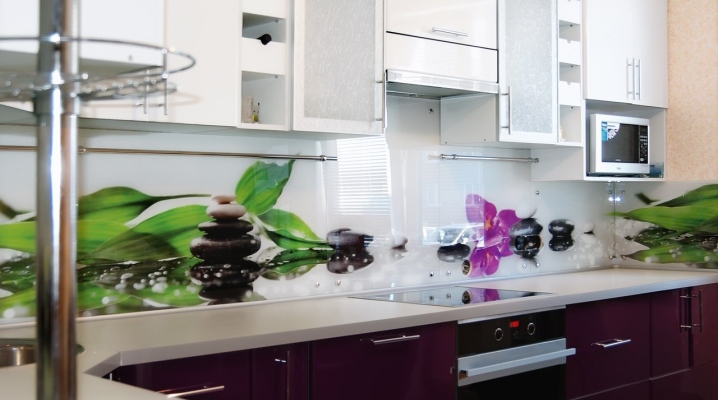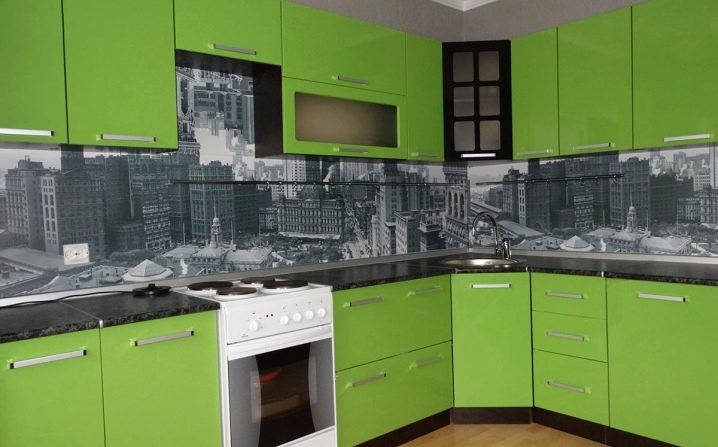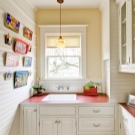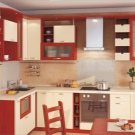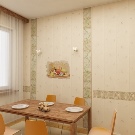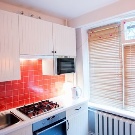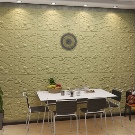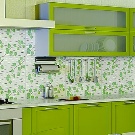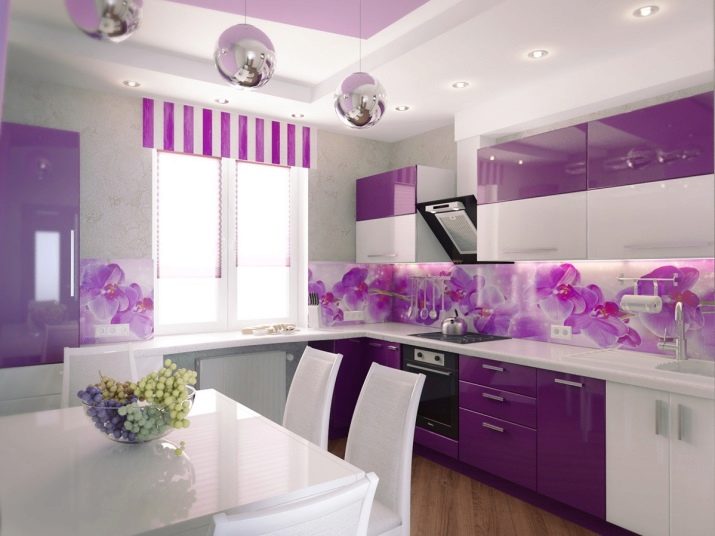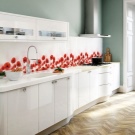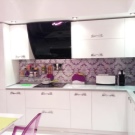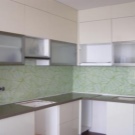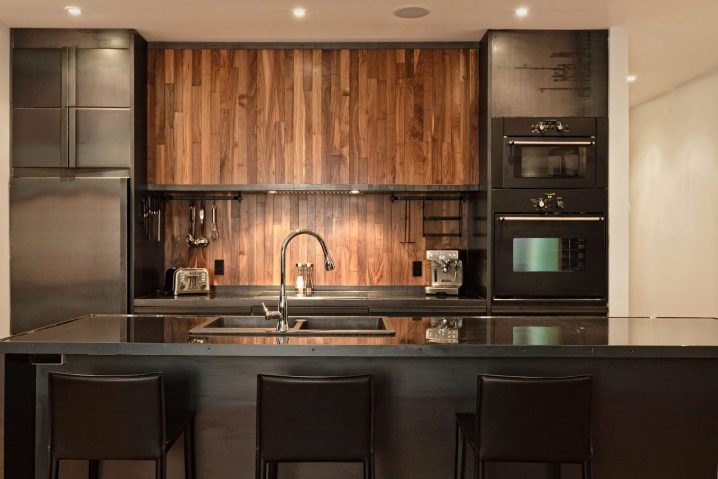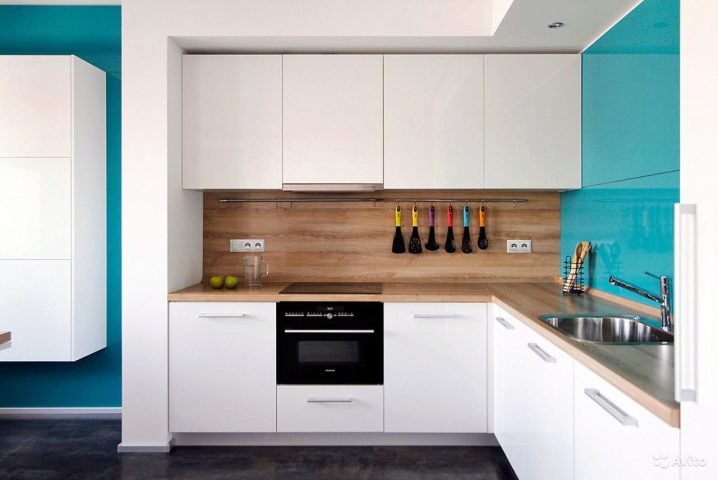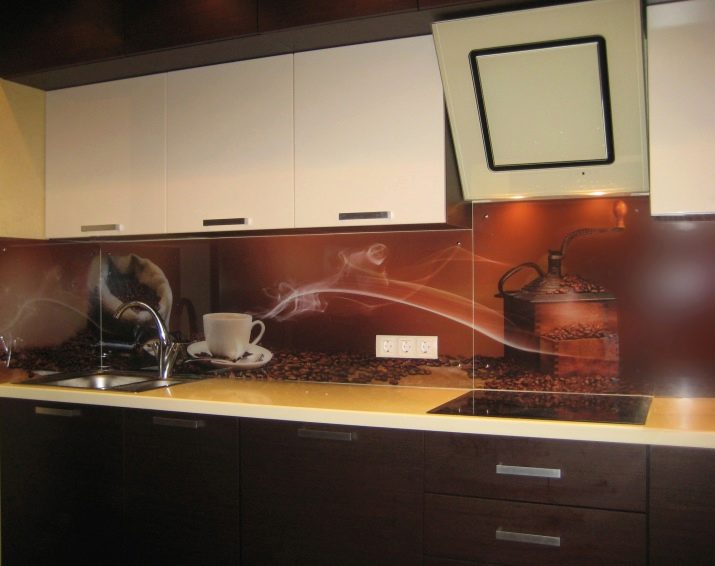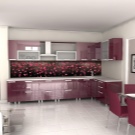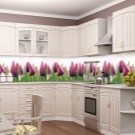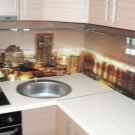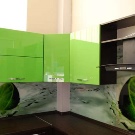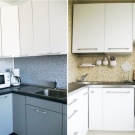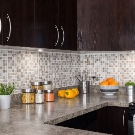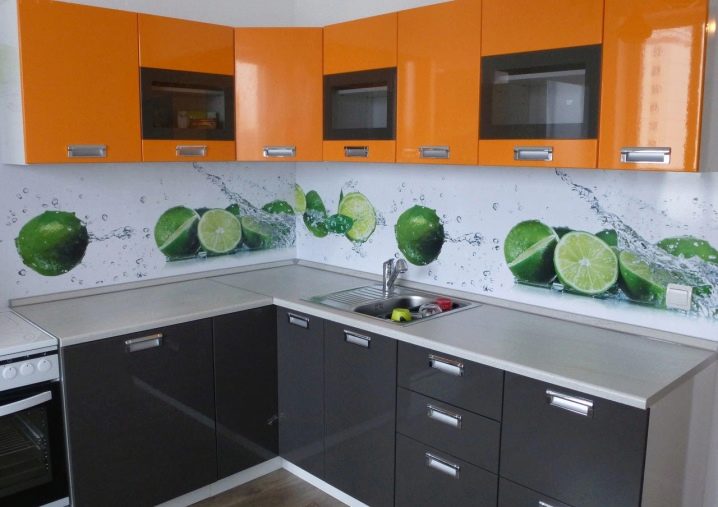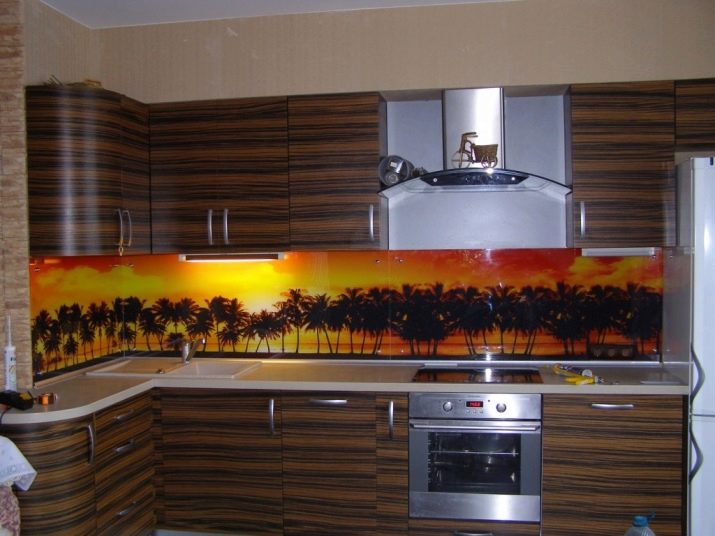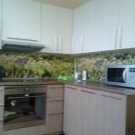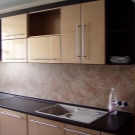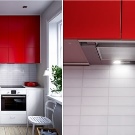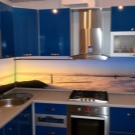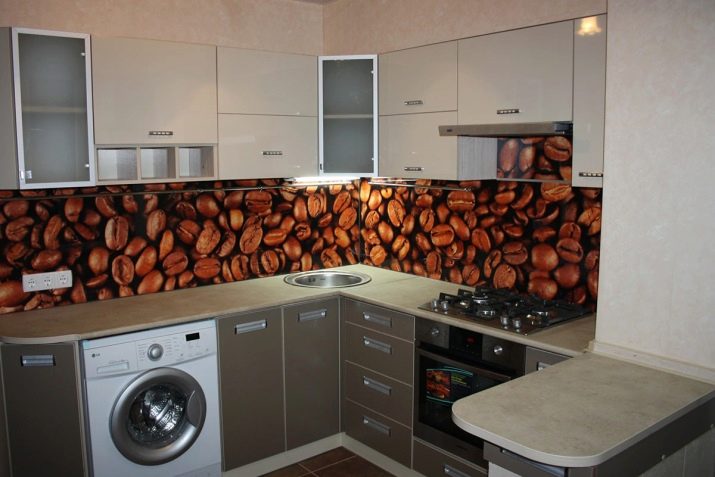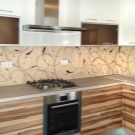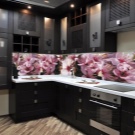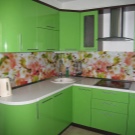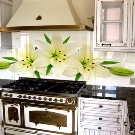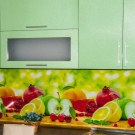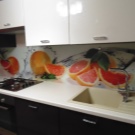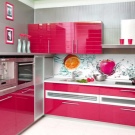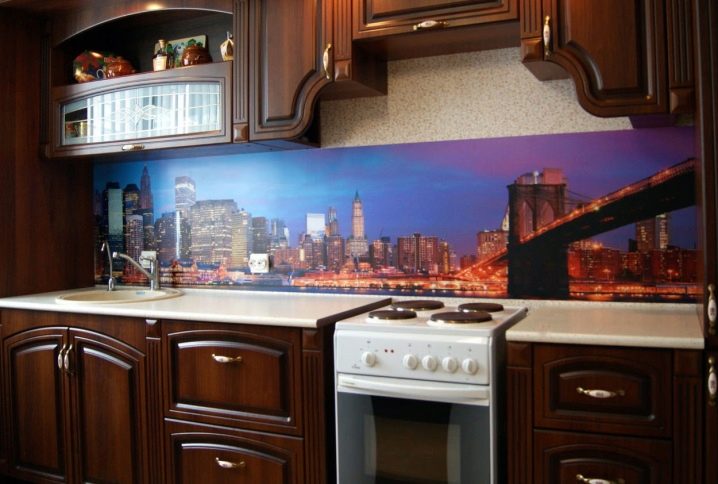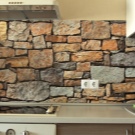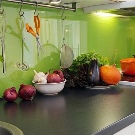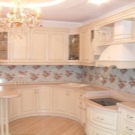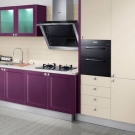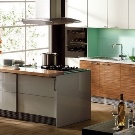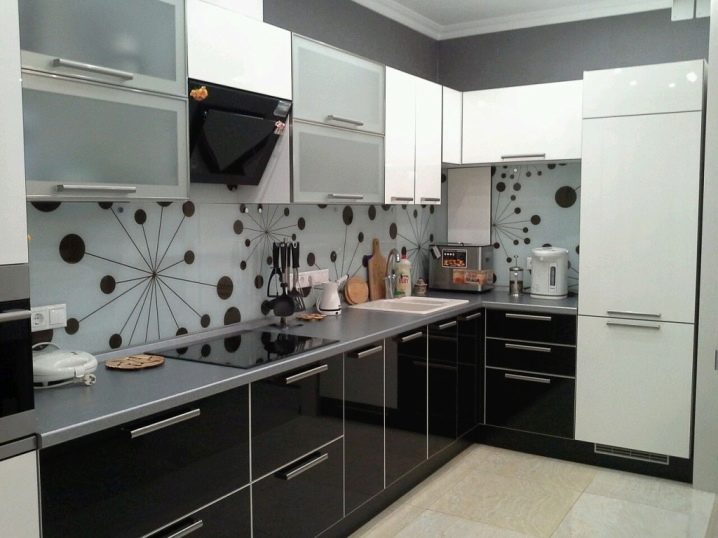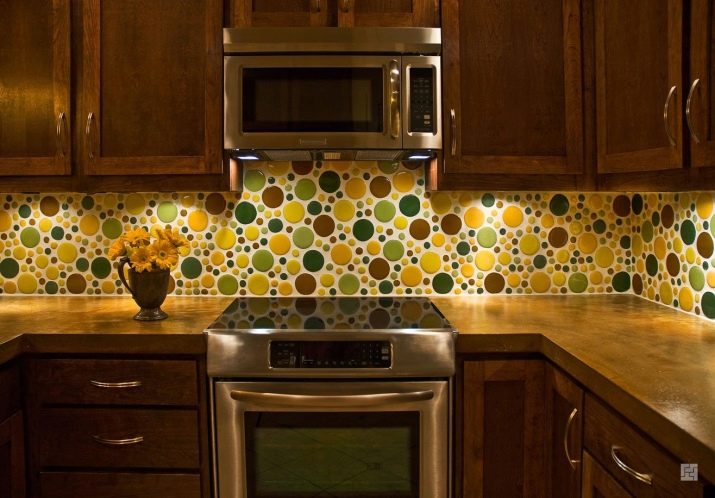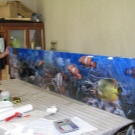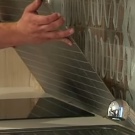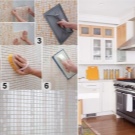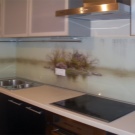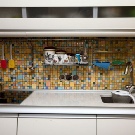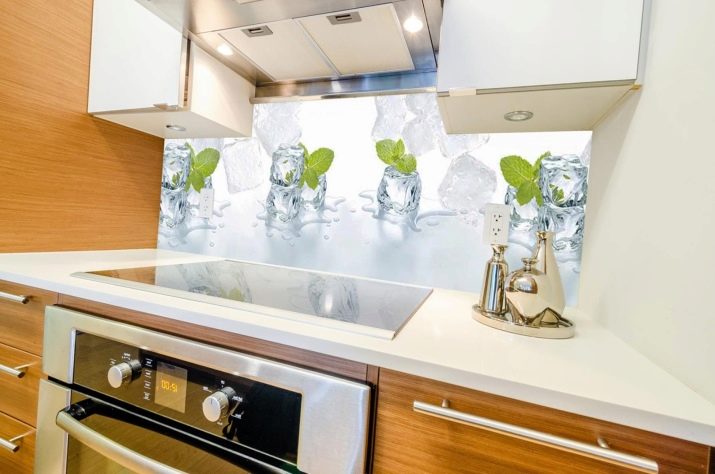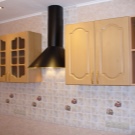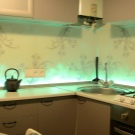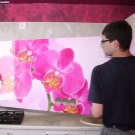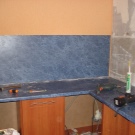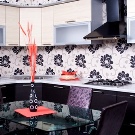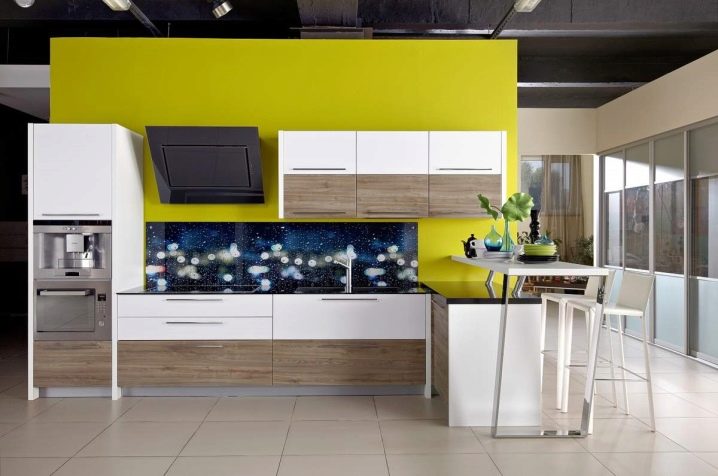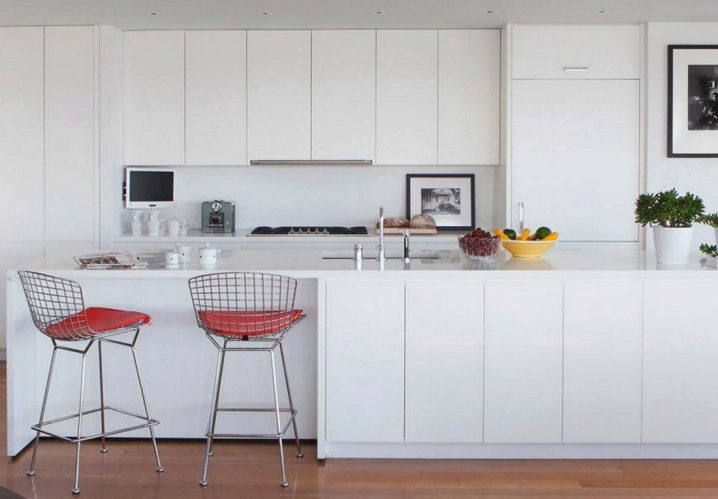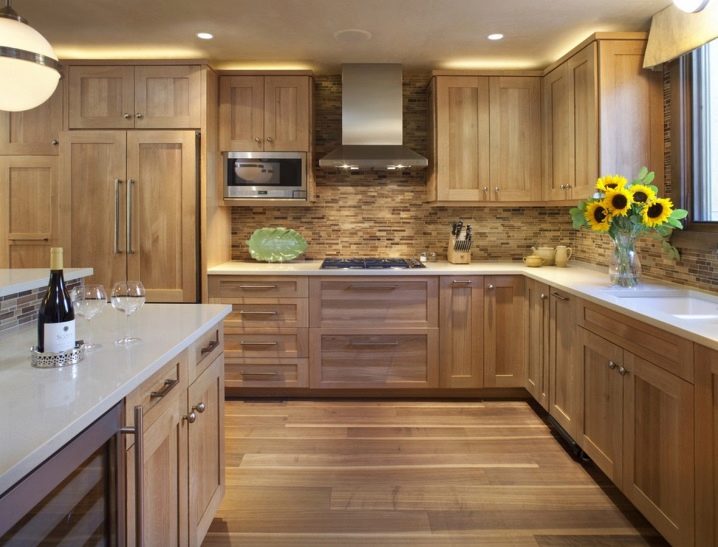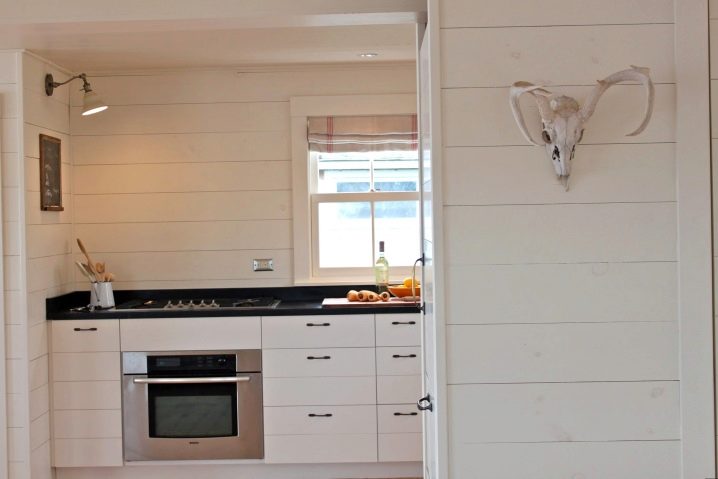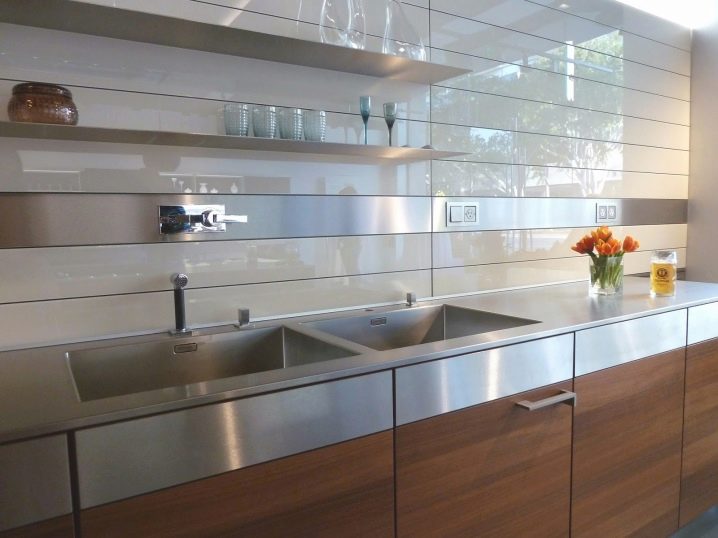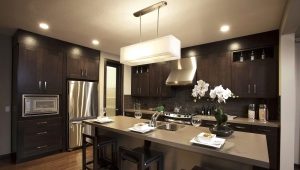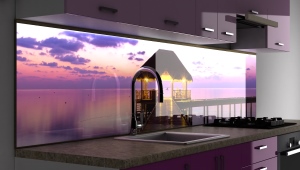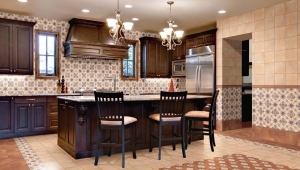Plastic panels for the kitchen
Ease of use and ease of installation made plastic panels for the kitchen an excellent alternative to traditional wallpaper and tile. They can decorate not only the "apron", but also the main part of the walls.
Features and benefits
Modern plastic panels may look significantly more expensive than they really are. High-quality material easily adapts to stone, wood, metal, mosaic. This made the panels incredibly popular - they are used for decoration in both luxurious and very simple apartments. In addition to the excellent decorative properties, these materials:
- easy to clean with almost any household cleaning products (except scratching powders);
- do not conduct electric current and are "indifferent" to moisture and a couple. In the kitchen, all this is especially important;
- very easy to install. If the walls are smooth, just stick to them, or attached to the frame. Sheets themselves come out of production smooth, and the coating is seamless;
Opponents of plastic sheathing operate on the following facts:
- sheets can be easily damaged, there are traces of blows on them and the slightest scratches appear;
- This coating is not environmentally friendly. In addition, when ignited, the sheets will melt and release toxic substances;
- fade in the sun (this applies to the most inexpensive types of panels).
Plastic panels usually finish kitchen apron. However, it is quite acceptable to replace them with the usual wallpaper or plaster. There is also a compromise option when half of the wall is sheathed with sheets (for example, from the floor to the middle, so that the walls are not damaged by furniture). In this case, plastic is combined with wallpaper and can very successfully complement the design.
Kinds
Wall panels are available in three versions:
- lining;
- sheets;
- actually, the panel.
Lining is very similar in appearance to the lining of wooden planks. In fact, these are the same boards, but from plastic. In terms of texture and pattern, PVC wall paneling also most often imitates wood. Conveniently, it can be laid in different ways - horizontally, vertically, “herringbone”, combining different types of masonry.
Standard lining has a width of 10 to 13 cm, the length of the “boards” can reach 6 meters.Using this type of materials, you can visually "pull out" the room along or up - the stripes always create a similar effect.
Kitchen panels are wider and shorter than lining: their length is up to 3 meters, and width is 15-50 cm. They are joined without seams - the walls are smooth and even.
Sheets are produced in a more dimensional form: their width starts from 80 cm, and the length can be up to 4 meters.
For self-cladding walls, simple panels are most often used, since they are the most convenient to use and do not require special skills for installation.
For the kitchen apron now more and more often use sheets of ABC - a special type of plastic, which uses copolymers that increase its strength. ABC panels are considered more environmentally friendly, they take up paint well (it is on this material that photo printing is best done) and are resistant to high temperatures. Walls decorated with such material, undemanding to care. You can easily make a neat hole in them if you need to add an outlet or switch in the kitchen.
Colors and design
The panels can have the most different designs - single-color, imitating the texture of different materials, with floral designs, geometric patterns, abstract patterns, etc.For the decoration of small rooms most often use light panels with an implicit pattern, but bright, patterned are best suited for spacious kitchens.
The durability of the picture (and, as a result, the price of the material!) Is affected by the way it is applied. The most commonly used are:
- Offset printing. The same way that drawing is applied on paper - i.e. roll plastic under rollers with paint. The image is quite persistent and pleasant in appearance.
- Thermal Translation The cheapest way to manufacture. A thin film with a pattern is applied on the panel, which leaves an imprint on the surface under the influence of temperature. Such decoration quickly peels off, leaving ugly marks on the walls.
- Painting. The most reliable way: the paint is added directly to the raw materials at the manufacturing stage. Of course, small patterns are not applied this way, most often monochromatic plates or with decorative “divorces” are obtained at the exit. But this paint just does not burn out and does not peel off.
- Lamination. PVC decorative film is applied on the entire surface of the material. The panels acquire the original design and additional protection from moisture and high temperatures.
To create the original kitchen aprons are often used plastic sheets with photo printing. It looks very bright and becomes the main focus on any kitchen. You can buy ready-made solutions, and you can make photo printing and to order - with any image you like.
Also, bright panels, decorated with photographs, look good on finishing walls from the floor to the middle, in combination with calm wallpaper to match.
How to choose?
When purchasing a finishing material for the kitchen, be sure to carefully inspect it - both from the front and from the back. To the naked eye you can see:
- Dark spots on the surface of the panels. They indicate that recycled PVC was included in the feedstock.
- Irregularities in the side sections. Sheets should fit perfectly with each other. Do not hesitate to take two panels and connect them right in the store.
- The stiffening ribs sticking out. The more inside the panel stiffeners (horizontal planochkami that are visible on the side of the sections), the stronger the material. However, from the front they should not be visible, otherwise, the walls will resemble a washboard.
- Poor quality, blurred picture.
The seller needs to clarify where and when the material is made. The accompanying documents must indicate the composition of the raw materials. It is optimal if carbon, hydrogen, chlorine and associated lead are present in the composition. With such a composition, the material is resistant to burning, emits a minimum of harmful substances, retains heat, isolates sound and is resistant to moisture.
You should always ask in advance to understand the average price of plastic panels in your city. Low quality material will always give a small price.
If you need a lot of sheets, make sure that they are from the same batch - so their shade and pattern will match exactly.
You can calculate the required amount of material by calculating how many panels in width you need on each of the kitchen walls. The length of the sheets will most likely have to be cut. Several sheets are likely to be cut along.
How to do it yourself?
It is easy to work with plastic panels - with quality materials, wall decoration will turn into pleasure. In addition to the PVC sheets themselves, you will need:
- metal profile or wooden slats to create a frame;
- plastic profile (moldings) for the design of joints and corners;
- mounting materials, construction stapler;
- small handsaw;
- pencil, ruler, tape measure, level (horizontal and vertical).
First you need to create a frame. Ideally, it is made of a metal profile, but in order to save, you can do with wooden slats. The tree must first be thoroughly dried and treated with an antiseptic solution to prevent rotting.
If the panels are arranged vertically, the slats are made horizontal, and vice versa.
So, first, the upper and lower frames of the frame are attached to the wall. It is best to use for this screws with hiding head. Then, at intervals of approximately 60 cm, the remaining rails are installed.
To competently sheathe the walls with PVC sheets, you need to know the golden rule - the installation starts from the corner! For starters, you can choose any angle that suits you.
There angular plastic profile is installed. Its height is preliminarily measured, the excess part of the profile is sawn off with a small hacksaw. The construction stapler part is attached to the wooden rails of the frame.
Then an end plastic profile is attached to the top and bottom rails of the frame - like a border where the panels will be inserted. This is also done by a construction stapler on the inside edge of the part.
Now we proceed to the most important thing. The first panel - the most important one - depends on the flatness of its installation, how the rest of the sheets will lie down. Therefore, we set it strictly on the vertical level. It is inserted side cut into the corner profile, and the lower and upper - in the end. From the free side we tack it with a stapler to the frame. The next detail is joined with the previous one from the side, tightly winding the top and bottom in the profiles. We catch the staples. Similarly, we sheathe the wall to the end. The last detail, most likely, will have to be cut off along the length in order to bring it into profile.
In this way, you can finish both walls from floor to ceiling, and partially. If you decide to install PVC panels instead of tiles, you need to carefully prepare the wall. The working surface should be as flat as possible, therefore, after dismantling the tiles, the wall should be thoroughly cleaned and, if necessary, plastered.
If you started a global repair, and plan to close the pipes with plastic panels, you must purchase metal profiles to create a frame.The tree in the vicinity of wet pipes will quickly swell and begin to rot. First, profiles are installed on the floor, then vertical and then upper / horizontal. After that, the starting molding is installed against the wall and is attached to the frame. Then the panels are installed. Plastic sheets to the metal frame is best fastened with small screws, stapler or glue.
Important! At the design stage to the corner where the pipes will be closed with panels, it is imperative to design a window for quick access to fittings, revisions and other important parts of the pipes. The window is also edged with moldings at the edges and closed with a cut piece of panel.
At the end of all work, the panels need to be cleaned of construction dust - wipe with a damp cloth with soapy water or a small amount of cleaning paste.
Interesting solutions in interior design
To the interior of a modern style smooth, mirror panel fits perfectly. In this kitchen without wall lockers all attention is riveted to the wall. Plastic sheathed not only the apron, but the entire surface of the wall to the ceiling. The simplicity of the pattern is complemented by original watches and futuristic styling.The logical center of the composition - the area above the slab - is highlighted with a bright orange accent.
PVC sheets can easily imitate wood. Such panels (rather narrow with woody patterns) are at a glance indistinguishable from wooden lining. In the interior, they create a feeling of purity, comfort and create the basis for eco-style. The photo shows that in the adjacent corridor the walls are sheathed with the same sheets, but in the horizontal layout. Accordingly, changing the direction of masonry, you can zone the room, visually separating one part from another.
Another kitchen with free walls. The entire surface above the bottom drawers of the headset is lined with plastic panels horizontally. At the eye level, a decorative silver panel is mounted, and the shelves on which dishes are placed repeat the pattern formed by the PVC sheets.
Horizontal light panels imitate a board laying. The horizontal arrangement of the “boards” is maintained in the interior by the design of the headset: the dimensions of the drawers are comparable to the width of the plates and support the overall design in the kitchen. Such a finish will perfectly fit into the Scandinavian style, country or Provence.
